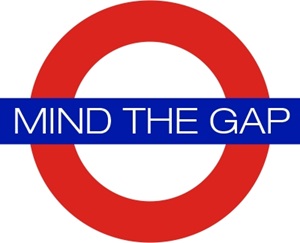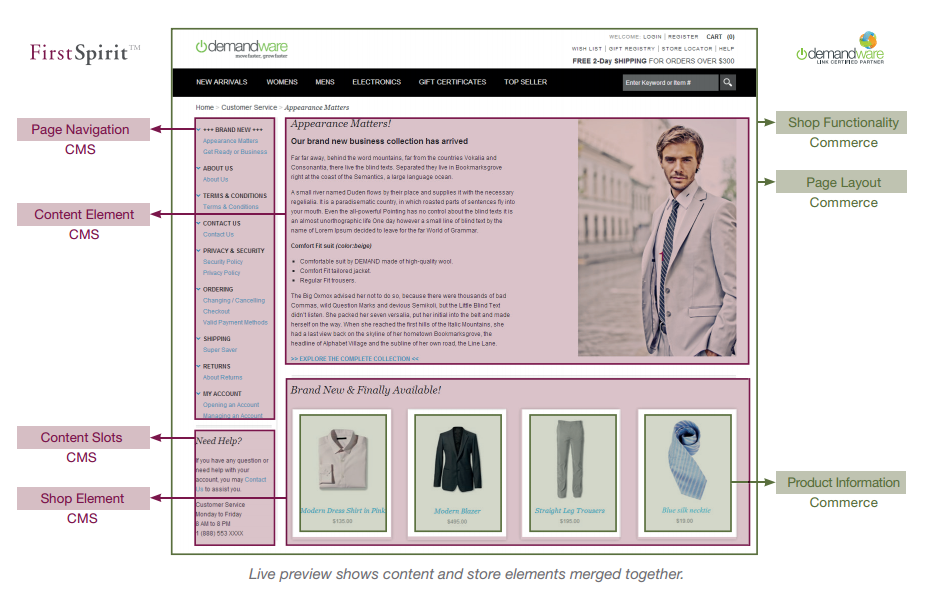Mind the Gap Between Content and E-Commerce
By Robert Bredlau, Chief Operating Officer, e-Spirit, Inc. 
Everyone who’s ever ridden the London Underground has heard or seen the phrase “Mind the Gap” pretty much everywhere you look. The reason for the many warnings has to do with the curved rail lines and the resulting gaps between train and platform that can be up to a foot wide in places.
As we can see from this analogy, gaps are not a good thing. But far too often, companies are failing to “Mind the Gap” when it comes to blending content strategies with online sales. Typically the corporate website is on one platform while the e-commerce is on something else entirely. There are literally gaps around every curve, leading to an inconsistent experience for customers and frustration for your content creation and marketing teams.
With few exceptions, two major Web platforms are a reality for most companies.
On one side, there’s the marketing team which is responsible for the corporate website, brand building and driving traffic to the company’s online and physical stores. These activities all require a powerful Web content management systems integrated with automated marketing, demand gen and tracking tools. The CMS is vital to success because it supports efficient content creation, improve SEO, and enables distribution of content out through multiple channels (mobile, social, print, etc.) The marketing team simple can’t live without it.
One the other side, there’s the retail team. While content is important for the e-commerce site, more crucial are having the ability to integrate with inventory management tools, work with suppliers and efficiently ship products out to customers. Online integration with bricks and mortar, for instance, is more important than Web experience. Like marketing, the retail team must have a state-of-the-art e-commerce platform.
So, since both platforms are crucial, what problems does this cause? Well, for starters, there are fundamental problems around managing what can be very large amounts of content. This is particularly challenging for large, multi-national enterprises who want to combine compelling marketing content with items from the retail store. Rather than shunting customers off to an e-commerce site – one that probably has a different look and feel – why not just take advantage of in the moment buying impulses? Such integration, while highly desirable, can be challenging across platforms if it involves developer resources and hand-coded scripts every time. There are also problems around content and data duplication and inevitable inconsistencies.
Similarly, things can get very messy in trying to personalize offers and customer activities consistently. With the likes of Amazon keeping very close tabs on the customer through every step of the marketing and sales cycle, customers expect every corporation they interact with on a regular basis to know and remember their preferences. But this can be challenging to achieve when customer records are spread across multiple platforms.
Given how different a Web CMS is compared to an e-commerce platform, it’s unreasonable to expect organizations to attempt to move to a single platform for all their needs. The requirements are just too diverse and specialized. This means that organizations who want to deliver a seamless experience to customers must find ways improve the synchronization between content and commerce platforms.
Vendors are leading the charge towards integration of Content and Commerce
Fortunately, vendors are getting the message and some are starting to offer out-of-the-box integration across platform. In the case of e-Spirit, we now offer integration with IBM WebSphere Commerce, Demandware and hybris and others.

Integration allows companies to more fully leverage the strength of each platform: content management tasks are handled by the CMS so marketing and retail teams can produce high-quality, search-friendly content more easily while the e-commerce handles all the transactional aspects. With features like live preview incorporating items from both the CMS and the e-commerce system, the result is the feel and usability of a single platform with the benefits and flexibility of two specialized platforms.
Giving customers a cohesive digital experience is difficult for any organization, one that is made much tougher without strong integration across the CMS and e-commerce platforms. This is a great topic and we’re looking forward to discussing it further with you during the upcoming CMSConnected show “Content & Commerce – The “Two Site” Syndrome” on June 24 at 12:30 p.m. featuring our own Guy Schneider, Vice President Sales at e-Spirit Inc. Hope to see you there.
Register Here for Content & Commerce

Jade Carter
Jade is a content writer for CMS-Connected, facilitating the needs of the company blog. Bringing 10 years of Search and Digital Marketing to the table, he strives to build informative, relevant and fun editorial posts for the blog feed. Jade is an ultra distance (26.2 miles+) trail runner and lives to run trails in and around his home town of Victoria, BC.